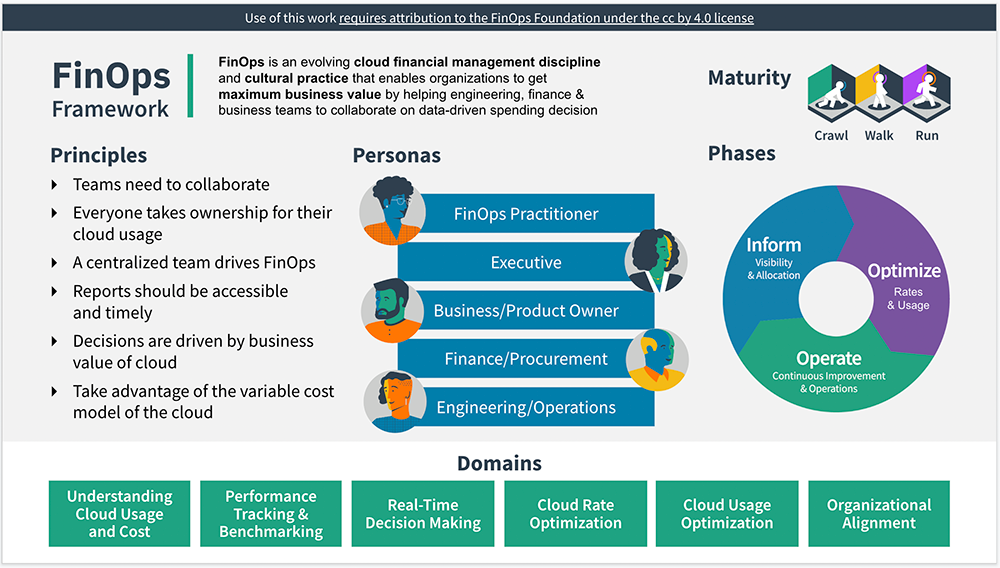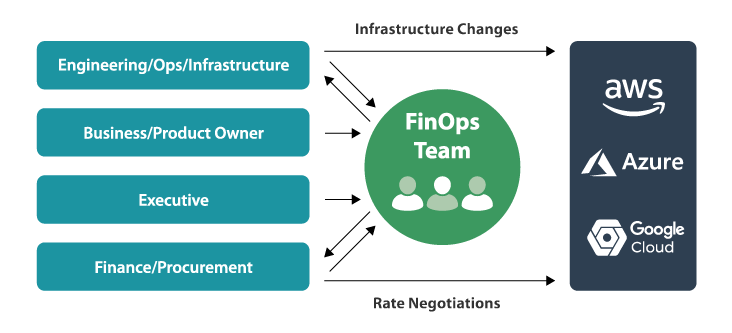Unlock the Benefits of FinOps: Streamline Operations, Increase Efficiency and Drive Business Growth
Imagine a scenario where the IT department is a well-oiled machine, where resources are allocated with precision, and costs are transparent and aligned with business goals. That’s the power of FinOps. But for many businesses, this might seem like a pipe dream. However, with the right approach, it’s entirely possible to transform the way your IT organization operates and start seeing real results.
At its core, FinOps is all about bringing financial discipline and accountability to the management of IT resources. It’s a mindset and set of practices that help organizations to better understand the true costs of their IT resources and make more informed decisions about how to allocate them. But it’s not just about cutting costs – FinOps is also about maximizing the value of those resources to the business.

The key is to start small and build momentum. But, where to begin? Many organizations are just starting to explore FinOps and are at the “Crawl” stage of the FinOps Maturity Model. To help these organizations take the next step, we’ll take you on a journey from Crawl to Run with FinOps.
First, assess your current state. Take a deep dive into your operations to understand your current level of cost optimization and financial control. Identify the key processes, systems, and technologies that are used and the people and teams responsible for managing them. This information will help you set specific, measurable goals for what you want to achieve with FinOps.

Next, it’s time to start walking. As you implement FinOps practices and see improvements, you’ll be on your way to the “Walk” stage of the FinOps Maturity Model. Key practices at this stage include:
- Cross-functional collaboration: Collaboration between finance, operations, and technology teams is key to the success of FinOps. Make sure everyone is working together towards the same goals.
- Technology adoption: Leverage the right technologies to support your FinOps journey. Consider tools such as cost optimization platforms, financial management systems, and cloud management tools to help you achieve your goals.
Finally, it’s time to run. As you continue to make progress, you’ll reach the “Run” stage of the FinOps Maturity Model. At this stage, you’ll be able to fully optimize costs and improve financial control, thanks to:
- Advanced processes: You’ll have fully integrated FinOps into your operations, streamlining processes and maximizing efficiency.
- Advanced technologies: You’ll be leveraging the latest technologies to support your FinOps practices and drive continuous improvement.
- Continuous improvement: You’ll be continuously reassessing your operations and making improvements to keep your FinOps journey on track.
As you start to implement FinOps, data and analytics will play a vital role. By collecting and analyzing data on the usage and costs of your IT resources, you can understand how resources are being used, identify areas for improvement, and make decisions on resource allocation. As you see results, the importance of data will become more apparent and you’ll begin to see the true value of FinOps.
As your business starts to embrace FinOps, you’ll begin to notice a shift in the culture of the organization. All stakeholders will begin to take ownership of the financial performance of IT resources and work together to optimize their use. This culture of collaboration and accountability is crucial for achieving strategic goals.